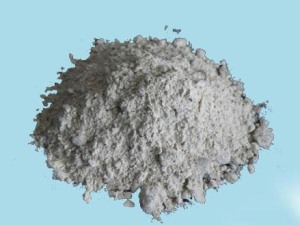The composition and function of ramming material
We all know that the composition of quartz sand ramming material is based on the needs of practical production, and is composed of refractory materials and powders of various materials. Adding a small amount of auxiliary agents in production can improve the use of combustion efficiency. This material is used in combination with auxiliary materials. What can the agent be used for, and what are the functional advantages of using it?
The ramming material uses magnesium chloride and sulfate and other aqueous solutions as well as phosphates and their polymers as binders, and often uses carbon-containing organics and temporary binders that form carbon bonds at high temperatures. Chromium Glauber's salt is often used as a binder for ramming materials. High-alumina and corundum ramming materials are often used as binders with inorganic substances such as phosphoric acid and aluminum phosphates, chlorides, and sulfates. Due to the reaction between phosphoric acid and activated alumina in the ramming material, the formation of water-insoluble aluminum orthophosphate deposits and coagulation and hardening. To extend the shelf life of the ramming material, it is necessary to add appropriate preservatives to prevent or delay the agglomeration and hardening. Generally, oxalic acid is used as a preservative.
The function of the ramming material is generally that the ramming material is mainly used for the parts that are in direct contact with the molten material. It is required that the refractory material must have good volume stability, fineness and corrosion resistance, so high temperature firing or electrofusion materials are generally used. The maximum particle size of the ramming material is related to the application part and the construction method. Most of the ramming materials have low normal temperature strength before sintering, and some medium temperature strengths are not high, and only reach the carbon content in the sintering or binder when heated. Good bonding is obtained only after the compounds are coked.
The refractory performance of quartz sand ramming material has been shown by a large number of production and application data, and the performance is more stable, and through the accurate material and auxiliary material ratio, the waste of production materials can be minimized and production consumption can be saved, and the ramming material can be used at high temperature. In addition to high stability and corrosion resistance.

Previous: Introduction of Insulation of Coil Clay
下一条: Talking about the construction technology of dry ramming material
Related Industry Knowledge
- Features and Benefits of Coil Clay
- What are the advantages of a good furnace lining
- Misunderstandings in the use of ramming materials in intermediate frequency furnaces
- Phenomenon analysis of failure of argon blowing of ladle permeable bricks and how to improve the rate of argon blowing
- Where is the consumption reduction and energy saving of breathable bricks reflected?
- How to improve the service life of intermediate frequency furnace lining
- Reasons for damage to intermediate frequency furnace lining and how to solve them
- The performance and advantages of breathable brick
- Analysis of Structural Characteristics of Dispersive Breathable Bricks
- The intermediate frequency furnace charge knotting process needs to pay attention to details sharing
- Introduction of Insulation of Coil Clay
- Safety elements of ladle breathable bricks


